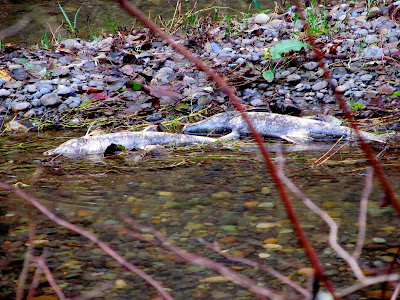 |
| As Hawaiian Petroglyphs Foretold, These Forms Rise Above the Land |
For whatever reason, this week offers multiple news stories about the risks of trainloads of oil, which brings up the risks of pipelines of oil, not to mention trainloads of coal. Transporting fossil energy, it turns out, requires the occasional sacrifice of life and lung.
Here in the Green Northwest, several of us have spoken out against trains and pipes full o petrochemicals crossing our turf, because we do not want to breathe the exhaust from Asians burning Occidental fossils, because we do not want to abet climate destruction, and because we are sometimes obstreperous. Meanwhile, our lands are criss-crossed by power lines originating from the not-yet-fossilized rivers where dams harness The Flow for our own energy needs, and harness the damned flow of salmon people and their human allies.
 |
| The path to this post |
 |
| A hill just outside of Anytown, USA |
Whether the web be of rails, or pipes, or copper, it has been joined in recent decades by another web of ether. Throughout the republic, eminences, peaks, knolls and knobs are topped by towers relaying sellphone cignals and who knows what else across the air.
It is hard to find a spot anymore where towers of power do not intrude on the landscape. It may sound superstitious, but it's hard to think of this and not recall the words of elders on some of the Hawaiian islands as they noted that something changed when electricity and poles arrived, that a richer (and sometimes scarier) night gave way to something more predictable, but less awesome and interesting. Outside of a very few areas (some of them, ironically, maintained by the same government so interested in snooping on everywhere else), it's impossible not to be in a grid traced by transmission towers wired and wirelessley knit together.




























